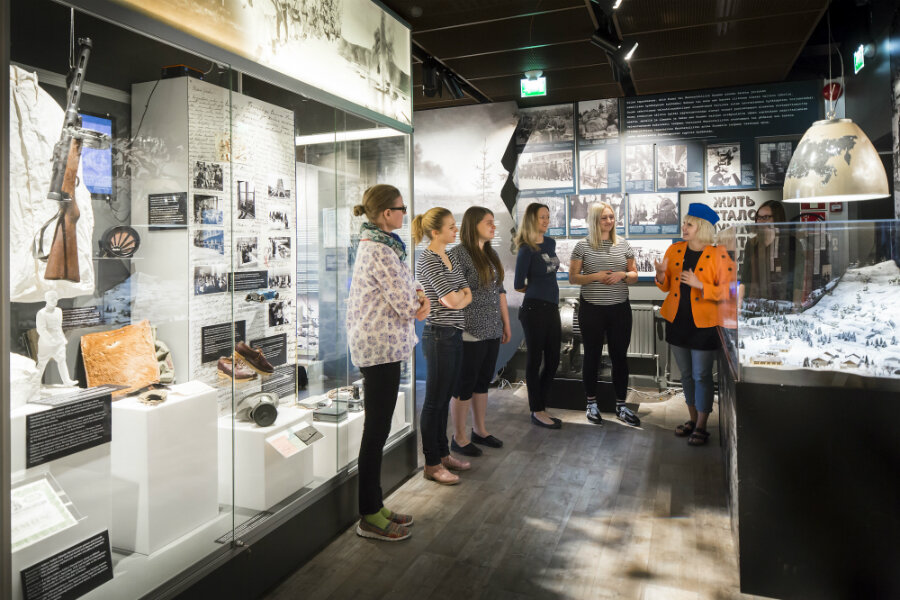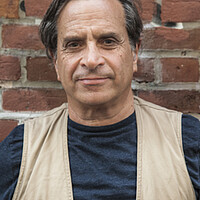In Finland, a one-time shrine to Lenin adopts an uncensored view
Loading...
| TAMPERE, FINLAND
This city, Finland's second largest, is known as the birthplace of the Soviet Union. The two architects of the Bolshevik Revolution, Vladimir Lenin and Josef Stalin, on the run from czarist authorities at the time, met in 1905 at Tampere's Workers' Hall.
The venerable hall used to be known as the site of the last survivor of a network of Lenin museums that stretched across the USSR and Eastern Europe – and cast the founder of the Russian Communist Party and his life's work in an epic light.
However, nostalgic pilgrims who are thinking of making their annual visit to the site are in for a surprise.
Instead of the dour, shrine-like former museum they are familiar with, they will find a lively multimedia gallery that recounts the true, terror-ridden story of the founder of modern Communism's legacy. For their Finnish neighbors, who previously perhaps preferred not to dwell on Lenin or their association with him or his dubious achievements, the renewed museum is an opportunity to reconsider a touchy subject.
"We wanted a museum that tells the whole story of what Lenin wrought," says Kalle Kallio, the museum director and the Finnish historian who oversaw the museum's two-year renovation. Additionally, and just as importantly, Mr. Kallio points out, "we also wanted to tell the whole story of this country's complicated relationship with 'the Neighbor to the East,' as we like to call Russia, in a balanced way."
A tangled past
To say that Finland and the Soviet Union had a "complicated relationship" is an understatement. In 1917, the then-restive semi-autonomous Russian province of Finland took advantage of the chaos of World War I and the Bolsheviks' coup to declare its independence, a move that Lenin approved. It was his hope that Finnish workers, particularly those whom he had met in "Red Tampere," as the industrial city was known, would follow his revolutionary lead and seize power.
The result was the horrific Finnish Civil War of 1918, which saw the Moscow-backed Reds fight the Swedish- and German-backed Whites. Ultimately, the Whites won and independent Finland forged ahead on its democratic, capitalist path.
Tensions between Finland and the USSR, ruled by Lenin's even more ruthless comrade and heir, Josef Stalin, continued through the interwar period, however. Those tensions exploded in November 1939, at the beginning of World War II, when Moscow invaded Finland with the ultimate objective of re-annexing it.
The result was the four-month-long Winter War, when the recalcitrant Finns fought the Soviets to a standstill before capitulating. Another even longer, bloodier war with Russia, the 1941-44 Continuation War, followed, after which the Finns had to surrender yet again. Thereupon a rapprochement followed between the ex-warring neighbors. The Finns were allowed to retain their capitalistic system in return for favoring the USSR with trade and maintaining a "friendly" neutrality in international affairs.
"The original Lenin Museum, which was established in 1946, was the outgrowth of that forced friendship," says Kallio. "Stalin personally approved of it." Most of the items in the original museum, which celebrated the Russian bombthrowers' fugitive Finnish days, came from the Lenin Central Museum in Moscow.
A visit to the Finnish museum was considered de rigueur by visiting Soviet dignitaries. Soviet premier Nikita Khrushchev made a pilgrimage to the museum during his first visit to Finland in 1958. So did his successor Leonid Brezhnev and scores of visiting Soviet apparatchiks. The museum reached its peak attendance in 1986, at the height of the cold war, when more than 24,000 Lenin lovers visited the hammer-and-sickle-adorned archive.
Sometimes the Soviet visitors were accompanied by Urho Kekkonen, the long-time Finnish president (1956-1981), who presided over the still controversial Fenno-Soviet relationship, known as "Finlandization." Then in 1991, to the shock of many Finns, who had become used to their "special relationship" with the Neighbor to the East, the USSR imploded and dissolved.
Shorn of its reason for being, the Lenin museum went from being a place of homage to a curiosity. Attendance plummeted, as did the government's willingness to subsidize this awkward reminder of the "special relationship." It was only a matter of time before it closed, like the rest of its Leninophile ilk.
A more complete view of Lenin
Kallio was determined to save it.
"I felt the museum was an important landmark," he says. "At the same time I realized that the only way it would be a success is if it were given a rethink, as well as a new mission." Local officials, as well as the Ministry of Culture, agreed and gave the young historian the roughly $1.2 million he and his staff needed to realize his vision.
The first task, after reconceptualizing the museum, was to find the hundreds of new objects and items needed to fulfill Kallio's new, critical vision for the institution. Virtually the only thing that the revamped museum now shares with its former incarnation is its name.
The new edition doesn't shy from the horrors of the USSR, and includes a large tabletop model of one of the Soviet prison camps where millions were imprisoned under Stalin's rule, along with a map indicating the location of the Soviets' so-called gulag archipelago.
"It was important to focus on the negative side of Lenin's legacy," says assistant curator Teemu Ahola, "especially the Soviets' abysmal record on human rights."
But it also has a sense of humor. Instead of the old hagiographic sculpture of Lenin, today's visitors are greeted by a mannequin of a dapper, selfie-ready Lenin with red pocket square jauntily seated in the sidecar of a Dnepr 658 Soviet motorcycle.
"We want visitors to the museum to come away with a three-dimensional picture of Lenin, and not demonize him," says Kallio.
The new museum, part of the Finnish Labor Museum, also takes on the difficult Finlandization period. There is a conspicuous photo of Kekkonen acknowledging the cheers of the Russians who lined the route of his motorcade during one of the dozens of visits he made to Moscow during his reign.
"The old Lenin museum was principally conceived to please Moscow," says Mr. Ahola. "The new museum was conceived as a resource for Finns, particularly young Finns who have a hazy notion of the 'Soviet time,' to fully understand the Soviet Union, as well as Finland's relationship with the USSR and in this way to better understand ourselves."
In the end, Kallio's and his team's great experiment paid off. More than 12,000 people, predominantly Finns, including school groups, have visited the museum since it reopened in August. "There have been a few old school communists who would have preferred that the museum continue to focus on Lenin and his 'teachings,' but by and large the reaction has been extraordinarily positive," says Ahola.
Lenin might not have approved of the new archive bearing his name, but the nation that helped the Bolsheviks get their start seems to.
"Actually, perhaps the most amazing aspect of the Lenin museum story," says Kallio, "is that it survived at all."









